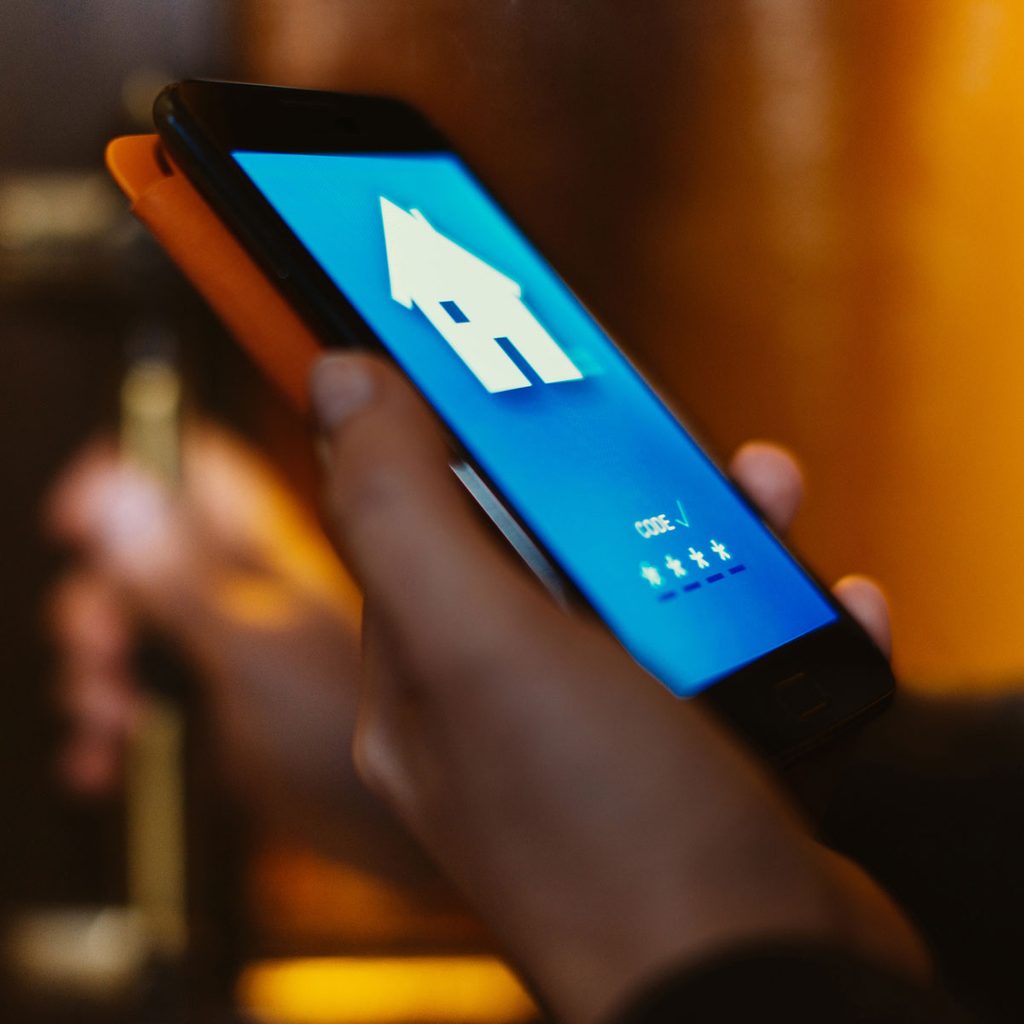What Is a Smart Home and Why Should I Want One?
Updated: Oct. 20, 2023

From video doorbells to energy-efficient flooring, learn more about what defines a smart home (and why you may want to adopt more elements of one).
Smart homes have gone from space-age dream to everyday reality. What used to be more of a niche investment is now widely available and relatively affordable, transforming millions of homes across the U.S. One study found that the global smart home market is expected to grow from $24 billion in 2016 to more than $53 billion by 2022.
Today’s smart homes combine the latest tech innovations and automations with sustainable, durable and energy-efficient methods and materials. Within that broad definition lies many ways that a smart home, or some elements of one, could benefit you.
On This Page
What Is a Smart Home?
A widely-used definition of “smart home” is a house where multiple devices automate tasks you would normally do yourself, such as arming the security system. Other actions, like turning on lights, playing music or glimpsing who just rang your doorbell, can be done right from your smart phone.
It’s more than just convenience. Smart home technology is also making home maintenance easier and more effective,” says Dan DiClerico, home expert and smart home strategist with HomeAdvisor. One example is a detector that alert homeowners to water leaks under the washing machine or water heater. Some detectors even automatically connect the homeowner to a nearby plumber to fix a problem. When the plumber arrives, the homeowner unlocks the smart door lock via their smartphone to let in the plumber.
Some of the connected technology, or home automation, can be built right into your house, like pre-programmed lighting and irrigation. Others are independent one-off devices, such as a smart speaker, security camera or kitchen faucet.
What Is Smart Home Improvement?
The broader definition of “smart home improvement” includes sustainable building materials, products and methods that cut energy usage and overall costs. Choosing durable eco-friendly flooring, swapping in LED bulbs and improving insulation all qualify as smart home improvements.
The U.S. Energy Information Administration says the average household consumes 90 million BTUs of energy a year. But homes built after 2000, despite being 30 percent larger, only use two percent more energy than older homes. The difference? Energy-efficient materials and equipment.
How Does a Smart Home System Work?
A smart home system works when a group of smart home devices and appliances receive or intuit commands. The various devices work together via a central hub to adapt and respond to the needs of the homeowner.
Many devices and appliances are controlled via voice, remote control or an app on your tablet or smartphone. Others use built-in artificial intelligence like The Nest thermostat, which adjusts the temperature based on collected information — when you leave the house in the morning, for instance, or your preferences for the changing seasons.
What Are the Benefits of a Smart Home?
The benefits of a smart home, or elements of one, include saving time and money, conserving energy and increasing safety and security.
A smart security system with connected lights, cameras and doorbells may prevent someone from breaking in — typically at a lower cost than traditional security systems. Smart appliances and fixtures, like a voice-command shower that remembers each family member’s preferred water temperature, can conserve resources while streamlining routine household tasks. And according to the U.S. Department of Energy, incorporating green building materials like proper insulation can achieve whole-house energy savings of 10 to 20 percent. Savings for older homes with little to no insulation can be much higher.
How Much Does a Smart Home Cost?
While a complete smart home system using all the latest technology certainly is expensive, you can pull together an economical DIY version if you start small.
Many homeowners begin with a popular speaker-turned-digital assistant such as Google Home, Amazon Echo or the Apple HomePod. All play music, provide sports scores or suggest a good movie to watch. The next thing you know, you’ve chosen an ecosystem (a collection of same-brand technology) and you’re pairing your speaker with other smart devices that communicate with Google, Alexa or Siri.
Suddenly it’s second nature to command a range of connected devices via voice or a tablet/smartphone app to automate daily tasks.